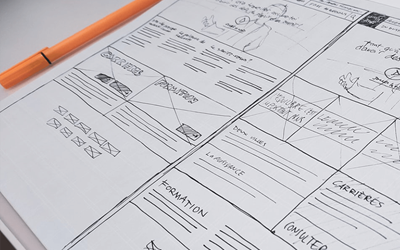Designing for Inclusion: The Role of Accessibility in Learning Solutions
At eCom we are fortunate to work on many meaningful projects across diverse learning groups, industries and geographies. Through these projects we have learned the importance of keeping the learner in mind and that what is created is accessible to all. We have invested years of research and development to make this happen and ensuring that learning can be inclusive.
Lets explore the significance of accessibility in learning and how our partnerships and platform have helped create accessible and engaging learning solutions.
Posted 7 August 2023
Accessible, usable learning
We have a great learning technology partnership with The Royal National Institute of Blind People (RNIB). Together we have been able to deliver accessible learning solutions that have been tested and endorsed by learners with disabilities. Our LMS platform, eNetLearn, has been developed with ease of use and accessibility designed from the outset, in partnership with the RNIB and Mencap - both of whom have helped us ensure that eNetLearn meets the highest accessibility and usability standards.
It’s also important to recognise that accessible learning isn’t just about ensuring that the learning works with screen readers or other types of assistive technology. It goes beyond that and into the design of the learning, whether it be decisions on colours, fonts, graphics, interactions but also the informative language that is used and the writing style of the content.

Putting learners first
We aim for everyone to enjoy a similar experience and be engaged through instructionally sound content development. Our experienced designers bringing their technical experience to the benefit of all learners so you don’t need to include a text-based alternative document.
Our learning solutions also include a range of interactions, knowledge checks, quizzes, graphics, assessments, audio, animation, video and opportunities for scenarios and all included with mindful consideration for best learning impact.

Enhancing learner engagement
Our Instructional Designers and subject experts will create content and learning resources applying instructional principles to ensure these are suitable for an engaging online delivery.
Frequency and types of interaction can be influenced by:
- the type and topic of content to be delivered;
- alignment to clearly defined learning outcomes; and
- appropriate instructional methodologies.
Learner engagement is critical, and our Instructional Designers (ID) always fully appreciate the diversity of the learning need. They take time to fully understand the audience and will review all the research available as well as asking questions to help build this deep understanding.
They also consider the baseline participant competencies and characteristics to bring appropriate methodology and learning strategies to help learners. Supporting those who may be less familiar with the topic, or confident in learning online to remove perceived technology barriers with the learning.

Learner-centric instructional decisions
At the heart of any instructional decisions is the learner and it is important that the content and its delivery is perceived from the learner’s viewpoint to enable them to achieve the stated objectives.
A helpful example of this is including too many of the same interactions in proximity, as this may have a negative impact on the learner. On the other hand, including a variety of interactions could be the best method to convey and engage that part of the learning.

Balancing learning and interactions
The overall balance and effectiveness of the instructional techniques employed is vital and is always given careful consideration. Our ID team ensure the balance is correct between learning and interactions, so the most inclusive strategy is evident.
Another helpful example is that case studies and scenarios can lend themselves extremely well to certain types of learning, and this approach helps with critical thinking and reflection of learners. Importantly it has been found to be an effective method of engaging learners, as well as being an effective method for identifying key learning points and demonstrating how they work within practice.
Each eCom learning module and programme will include a range of learning interactions to engage learners, reinforce understanding and ensure retention of the content. This will be done using video, audio, animation, text, images, graphics as well as additional learning resources complimented with excellent design.
Shaping your digital learning solution: The Power of Co-Creation
When developing or enhancing your workplace learning solution, it's important to recognise your organisation's unique needs, and look for a tailored solution that will address them. At eCom, this is something we help clients with all the time, creating unique, tailor-made learning solutions, through a process of co-creation.
If you’d like to know about our approach to learning design, and the benefits our co-creation approach can bring to your organisation, please read our blog Shaping your digital learning solution: The Power of Co-Creation, or simply get in touch - we’d love to hear from you.
Recent Posts
Mastering remote & hybrid learning with analyticsHarnessing data for future-proof workforce training
Bridging Worlds: Aligning personalisation with compliance in workforce learning
Optimising your workforce training for better performance
Towards a superior learning experience with analytics











